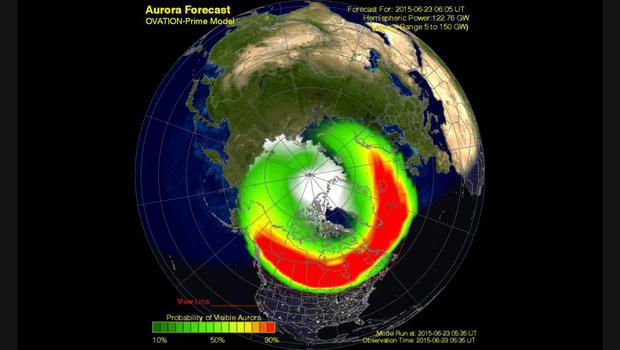Solar storm that hit Earth could bring northern lights as far south as Iowa
A severe solar storm slammed Earth on Monday afternoon, increasing the chances of fluctuations in the power grid and GPS. It also pushes shimmering polar auroras to places where more people can possibly see them.
Photographer Megan Sugden captured some spectacular photos of aurorae in northern Minnesota Monday night (see video, above). Federal forecasters said the northern lights may be able to be seen Tuesday night as far south as Iowa or Pennsylvania.
The National Oceanic and Atmospheric Administration said a potent blast of magnetic plasma shot out of the sun on Sunday, traveling faster than usual, hitting Earth with the biggest solar storm since March, maybe since September 2005.
NOAA space weather physicist Doug Biesecker said there are no reports of damage, but the electrical grid and GPS probably had current fluctuations that they could handle.
On Monday, another blast erupted from the same active region of the sun. Known as a coronal mass ejection, or CME, it released an enormous cloud of billions of tons of solar atmospheric material into the solar system. These fast moving clouds can reach Earth in about three days, and NOAA expected it to arrive Wednesday evening, around 7 p.m. Eastern.
"This timing bodes well for aurora watchers in North America," according to NOAA's Space Weather Prediction Center.
The storm was categorized as "Severe" early Tuesday, with solar wind conditions likely to produce "continued strong geomagnetic storming."
